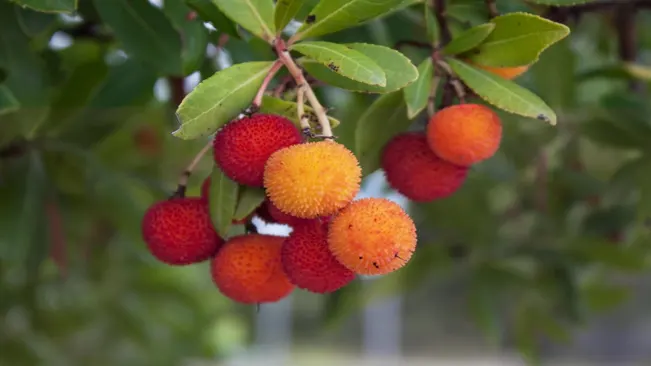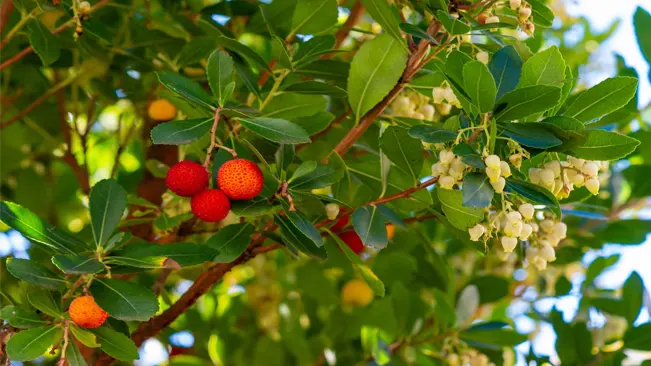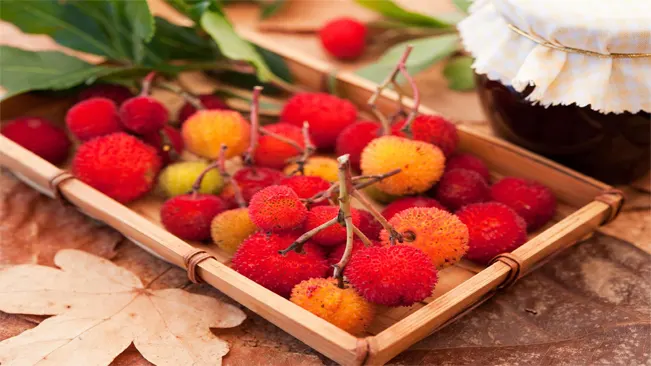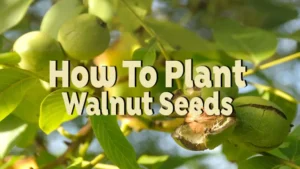How to Grow Strawberry Tree: A Complete Cultivation Guide
- April 1, 2024
- 0 comment
Learn how to grow the Strawberry Tree (Arbutus unedo), an evergreen known for its strawberry-like fruits and attractive bark. Originating from the Mediterranean and Western Europe, it provides year-round garden interest. This guide covers essential steps and tips for cultivating a thriving Strawberry Tree in your outdoor space

Before diving into the planting process, it’s essential to understand the characteristics of the Strawberry Tree. This tree typically grows up to 5-10 meters tall and has a bushy, spreading habit. The leaves are dark green and glossy, and the bark peels back to reveal a reddish-brown underlayer, adding to its visual appeal. The tree blooms in late autumn, producing white or pale pink bell-shaped flowers, followed by round, red fruits that resemble strawberries.
List on How To Grow Strawberry Tree
- Choosing the Right Location
- Planting the Tree
- Watering and Mulching
- Fertilizing and Pruning
- Harvesting and Enjoying the Fruit
- Pest and Disease Management
Choosing the Right Location
Choosing the right location for a Strawberry Tree (Arbutus unedo) is a crucial step that greatly influences the health and growth of the tree. Let’s delve deeper into each aspect of selecting the ideal location:

Understanding Soil Requirements
- Well-Drained Soil: The most critical aspect is good drainage. The tree doesn’t fare well in waterlogged conditions, which can lead to root rot. If your garden has heavy clay soil, consider amending it with organic matter to improve drainage or planting the tree in a raised bed.
- Soil pH: It is adaptable to different soil pH levels, including slightly acidic to alkaline soils. However, it prefers a slightly acidic to neutral pH. You can test your soil’s pH and amend it if necessary.
Sunlight and Shade
- Sunlight Preference: While the Strawberry Tree can tolerate partial shade, it thrives best in full sun. A sunny spot ensures the best growth, flowering, and fruiting.
- Partial Shade Tolerance: In hotter regions, some afternoon shade can be beneficial, especially in the peak summer months, to prevent excessive stress on the tree.
Space and Growth Habit
- Mature Size: The tree can grow up to 5-10 meters (15-30 feet) in height and spread. Ensure there’s enough space for the tree to grow without interference from buildings, power lines, or other trees.
- Root System: Understanding the tree’s root behavior is important. While the roots are not typically invasive, they need adequate space to expand. Plant the tree away from foundations, walls, and paved areas to avoid any potential root-related issues.
Environmental and Climatic Conditions
- Climate Adaptability: It’s well-suited for regions with mild, Mediterranean-like climates. It can handle occasional frosts but may suffer in regions with prolonged freezing temperatures.
- Wind and Exposure: The tree can tolerate some wind, but in very windy locations, a sheltered spot is advisable to protect it from strong, damaging winds.
Planting the Tree
Selecting a Planting Site
- Sunlight and Space: Choose a location that gets full sun to partial shade. The Strawberry Tree doesn’t like to be crowded, so ensure there’s enough space for it to grow to its full size, both in height and width.
- Wind and Protection: While reasonably hardy, young trees can benefit from protection against strong winds, so a somewhat sheltered spot is ideal.
Soil Preparation
- Drainage: Good drainage is crucial. If you have heavy clay soil, consider raising the planting area or creating a raised bed.
- pH Levels: This tree is not very picky about soil pH but generally prefers slightly acidic to neutral soil.
- Organic Matter: Incorporating organic matter like compost or well-rotted manure is vital for nutrient-rich and well-draining soil.
Planting the Tree
- Root Inspection: Before planting, check the tree’s roots. If they are circling the pot (root-bound), gently tease them out to encourage outward growth.
- Correct Depth: It’s important to plant the tree at the same depth it was in the pot. Planting too deep can stress the tree and lead to poor growth or disease.
Watering and Mulching
Watering
Proper watering is essential for the health and growth of a Strawberry Tree, especially during its establishment phase, which typically lasts through its first growing season.
- Frequency and Amount: In the initial year after planting, water the tree deeply once a week. The goal is to provide enough water to reach the deeper roots, encouraging them to grow downwards which aids in drought tolerance later on. The amount of water needed can vary based on soil type and climate, but a general rule is to provide about an inch of water each week, either through rainfall or irrigation.
- Monitoring Soil Moisture: It’s important to let the soil dry out slightly between waterings. Over-watering can be just as harmful as under-watering, leading to root rot and other issues. You can check the soil moisture by feeling the soil a few inches beneath the surface; it should be moist, not saturated.
- Adjusting for Weather and Seasons: Reduce the frequency of watering as the tree becomes established. Mature Strawberry Trees are drought-tolerant and may only need extra watering during prolonged dry spells or extremely hot weather.
Mulching
Mulching is a beneficial practice that supports the tree’s growth by maintaining soil moisture, regulating soil temperature, and suppressing weed growth.
- Choice of Mulch: Organic mulches are preferable for Strawberry Trees. Materials like bark chips, leaf mold, or compost work well. These materials not only retain moisture but also gradually break down, adding nutrients to the soil.
- Applying the Mulch: Spread the mulch in a layer about 2-3 inches thick around the base of the tree. Avoid piling mulch against the trunk itself, as this can encourage rot and pest problems. Extend the mulch out to the tree’s drip line if possible, as this is where the majority of the roots are located.
- Renewing Mulch: Replenish the mulch layer annually or as needed. Over time, organic mulch will decompose and integrate with the soil, which improves soil structure and fertility.
Fertilizing and Pruning
Feed your Strawberry Tree annually in spring with a balanced, slow-release fertilizer to support its growth. Pruning is generally minimal and is best done in late winter or early spring to remove dead or diseased wood and to shape the tree.
Fertilizing the Strawberry Tree
- Timing: The best time to fertilize the Strawberry Tree is in spring as new growth begins. This gives the tree the nutrients it needs to support the growth of leaves, flowers, and fruits.
- Type of Fertilizer: A balanced, slow-release fertilizer is ideal. Look for a fertilizer with an even NPK ratio (Nitrogen, Phosphorus, Potassium), such as 10-10-10 or 8-8-8.
- Application: Apply the fertilizer according to the package instructions. Typically, you’ll spread the fertilizer evenly around the base of the tree, extending to the drip line (the area directly beneath the outer circumference of the tree branches).
- Careful Feeding: Over-fertilizing can be detrimental, leading to excessive leaf growth at the expense of flowering and fruiting, or even damaging the roots. It’s important to follow the recommended rates.
- Organic Options: For organic gardening, well-rotted manure or compost can be a good alternative to commercial fertilizers. These organic materials also help improve soil structure and water retention.
Pruning the Strawberry Tree
- Timing: The best time for pruning is in late winter or early spring, just before new growth starts but after the worst of the winter cold has passed.
- Purpose: Pruning is done to maintain the tree’s shape, remove dead or diseased wood, and promote healthier growth. Strawberry Trees have a naturally bushy and attractive shape, so extensive pruning is often unnecessary.
- Technique: When pruning, use clean, sharp pruning shears. Make your cuts at a 45-degree angle, about 1/4 inch above a bud facing the outside of the plant. This encourages outward growth.
- Thinning: If your tree is particularly dense, thin out some of the branches to allow light and air to penetrate the canopy, which helps reduce the risk of disease.
- Shaping: If you wish to shape the tree, do so sparingly and try to maintain its natural form. Over-pruning can stress the tree and reduce fruiting.
- Clean Up: Remove any pruned material from around the base of the tree to prevent the spread of pests and diseases.
- Sanitation: Always sanitize your pruning tools before and after use to prevent the spread of disease from one plant to another.
Harvesting and Enjoying the Fruit
The fruits take about 12 months to mature and are typically ready for harvest in late autumn. They have a unique, slightly sweet taste and can be eaten fresh or used in jams and jellies.
Harvesting the Fruit
The fruits of the Strawberry Tree are quite distinctive. They’re round, about 1-2 cm in diameter, and have a rough, bumpy surface, similar in appearance to strawberries (hence the name).

- Timing: The fruits typically take about a year to mature. They’re usually ready for harvest in the late autumn, though the exact timing can vary depending on your climate and weather conditions.
- Ripeness: It’s important to wait until the fruits are fully ripe before harvesting. Ripe fruits will be a bright red or sometimes orange-red color. They should feel slightly soft to the touch.
- Gentle Harvest: The fruits should be picked gently to avoid bruising. Use a soft hand and twist the fruit lightly off the stem.
Enjoying the Fruit
The fruits have a unique taste that is slightly sweet, but they can also be somewhat bland or mealy. Despite this, they can be quite enjoyable and are versatile in their use

- Eating Fresh: You can eat the fruits fresh from the tree. They have a unique texture and flavor that some people find quite pleasant. It’s a bit of an acquired taste for others.
- Cooking and Baking: The fruits can be cooked down into a compote or used in baking. They pair well with other fruits in pies or tarts.
- Jams and Jellies: One of the most popular uses is in making jams, jellies, or marmalades. The fruits have a natural pectin content, which helps in setting these preserves.
- Liqueurs and Wines: In some regions, particularly in Portugal and Italy, the fruits are used to make liqueurs and wines.
Nutritional and Medicinal Value
The fruits are not only tasty but also have some nutritional and medicinal benefits
- Nutrition: They contain vitamins, especially vitamin C, and minerals.
- Traditional Medicine: Historically, the fruits have been used in traditional medicine in some cultures. They are believed to have diuretic and urinary antiseptic properties.
Tips for Storage and Use
- Short Shelf Life: The fruits don’t store well for long periods. They’re best used soon after harvesting.
- Freezing for Later Use: If you have a large harvest, you can freeze the fruits for later use in cooking or jam-making.
Pest and Disease Management
Pest and disease management is an important aspect of caring for Strawberry Trees (Arbutus unedo). Although these trees are known for their relative hardiness and disease resistance, they can occasionally be troubled by certain pests and issues.
Common Pests
- Aphids: These small, sap-sucking insects can infest new growths. They can cause leaf curling and distortion and may produce a sticky substance known as honeydew, which can lead to sooty mold growth.
- Scale Insects: Scale insects attach themselves to the stems and leaves, feeding on the sap. They can weaken the tree and also produce honeydew, leading to sooty mold.
Pest Management Strategies
- Regular Inspection: Regularly inspect your Strawberry Tree for signs of pests, focusing on the undersides of leaves and near new growths.
- Natural Predators: Encouraging natural predators like ladybugs, lacewings, and birds can help control aphid populations.
- Horticultural Oil or Soap: Application of horticultural oil or insecticidal soap can effectively control aphids and scale insects. These are safer for beneficial insects and the environment.
- Manual Removal: For small infestations, you might be able to remove pests manually or by using a strong jet of water to dislodge them.
Disease Management
While Strawberry Trees are not commonly affected by a wide range of diseases, they can occasionally suffer from the following
- Root Rot: This is typically a result of poor drainage. Ensuring that your tree is planted in well-draining soil can prevent root rot.
- Sooty Mold: This black mold grows on the honeydew produced by aphids and scale insects. Controlling these pests is key to preventing sooty mold.
Disease Management Strategies
- Proper Planting and Watering: Plant in well-draining soil and avoid over-watering to prevent root rot.
- Good Air Circulation: Prune the tree to maintain good air circulation, which helps prevent the onset of fungal diseases.
- Cleanliness: Keep the area around the tree free of debris and fallen leaves to reduce the likelihood of disease.
Integrated Pest Management (IPM)
- Consider adopting an Integrated Pest Management (IPM) approach, which involves using the least toxic methods first, such as cultural, mechanical, and biological controls, before resorting to chemical treatments. This approach is more sustainable and environmentally friendly.
Related Post:
Conclusion
Growing a Strawberry Tree can be a rewarding experience for any gardener. With its attractive foliage, distinctive bark, and delightful fruits, it’s a great addition to any landscape. By following these guidelines, you can enjoy the beauty and bounty of this unique tree for many years to come.
FAQs (Frequently Asked Questions)
- What is the best location to plant a Strawberry Tree?
Strawberry Trees prefer well-drained soil and a sunny to partly shaded spot in the garden. They can adapt to a range of soil types but do best in a location that receives full sun for most of the day. - How much water does a Strawberry Tree need?
During its first growing season, water the tree deeply once a week. Once established, it’s fairly drought-tolerant, but it’s best to allow the soil to dry out slightly between waterings. - Do Strawberry Trees require a lot of fertilizers?
No, they do not require heavy fertilization. Feeding once a year in spring with a balanced, slow-release fertilizer is usually sufficient. - When is the best time to plant a Strawberry Tree?
The best time to plant is in spring or early autumn, which allows the tree to establish its root system before extreme weather conditions (hot summer or cold winter). - How fast do Strawberry Trees grow?
They are slow to moderate growers. You can expect a young tree to take several years to reach its full size. - What are common pests or diseases that affect the Strawberry Tree?
They are relatively disease-resistant. However, they can occasionally be affected by pests like aphids and scale insects. Regular monitoring and prompt treatment are recommended if pests are detected. - Can I grow a Strawberry Tree in a container?
Yes, Strawberry Trees can be grown in large containers, provided they have sufficient room for root growth and proper drainage. - How do I prune a Strawberry Tree?
Prune in late winter or early spring to remove dead or diseased wood and to shape the tree. Generally, they require minimal pruning. - When can I expect my Strawberry Tree to bear fruit?
Fruit typically appears in the second or third year after planting. The fruits take about 12 months to mature and are usually ready for harvest in the late autumn. - Are Strawberry Tree fruits edible, and what do they taste like?
Yes, the fruits are edible. They have a slightly sweet, somewhat bland taste and can be eaten fresh or used in making jams and jellies.

Kristine Moore
Forestry AuthorI'm Kristine Moore, a seasoned garden landscaping professional with over 30 years of experience. My extensive career has been dedicated to transforming outdoor spaces into stunning, sustainable landscapes. With a deep understanding of horticulture, design principles, and environmental stewardship, I have become a respected figure in the field, known for creating harmonious, visually appealing, and eco-friendly gardens. My commitment to excellence and continuous learning in landscaping trends and techniques has solidified my reputation as an expert in garden design and implementation.













Leave your comment